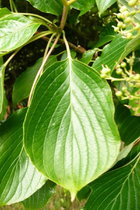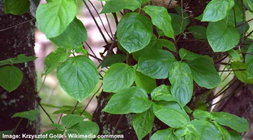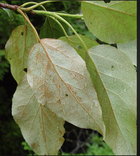- Joined
- Jul 18, 2018
- Messages
- 1,308
- Likes
- 2,787
- Location
- Baltimore, MD
- Website
- loujacobswoodturning.com
Google Lens agreesFor what it's worth I'm getting Balsam Poplar on PictureThis app.
The leaves are much to small to be basswood and the bark is also not right for basswood. Note I live on Basswood lake and my address is on Basswood Lake Road in the MN lakes area so I have plenty of examples of basswood on my 5 acres and the majority of the land on the lake that is not developed.Maybe Basswood. I’m not real familiar with basswood. I does grow in MD. we got a couple trees when we lived in MD
It is a soft light weight wood. duck carvers like it.
so which of the six? houses is yours?The leaves are much to small to be basswood and the bark is also not right for basswood. Note I live on Basswood lake and my address is on Basswood Lake Road in the MN lakes area so I have plenty of examples of basswood on my 5 acres and the majority of the land on the lake that is not developed.
There are only 4 permanent residences on the lake with 2 of them on Basswood Lake road and 2 on Basswood road and they are on the SE end. There are 3 small cabins with 1 between me ( farthest south) and the other of the SE permanent residence. The SW cabin has electricity and indoor plumbing then the hunting camp on the W and the small cabin on the NW do hot have electricity and are seldom used.so which of the six? houses is yours?
There are at least three basic varieties of basswood/Linden around in the US. American Linden has the giant, plate sized leaves and is probably what Don has in his woods. Then there is the "little leaf Linden", with leaves varying from aspen sized to palm sized. The third variety is the "Redmond" Linden, which may be a horticultural creation from a cross of the first two. The leaves on it are generally in the palm size range. None of them has quite the correct leaf shape, which is asymmetrical, if I remember correctly.The leaves are much to small to be basswood and the bark is also not right for basswood. Note I live on Basswood lake and my address is on Basswood Lake Road in the MN lakes area so I have plenty of examples of basswood on my 5 acres and the majority of the land on the lake that is not developed.




I was thinking that is what it may be when he commented that it was a broken off branch since that is typical for cottonwood.Plantnet says cottonwood @ 75% confidence!
Lou there is a good reason that it is called GIANT DOGWOOD, the info I found tells me it can grow as tall as 60 feet, more commonly in the 40 feet range.Leo, you make an interesting argument, but I did not consider dogwood because of the size of the tree. The pieces I got are from an upper branch that broke out of the tree, about 10” in diameter. The main trunk is more like 16-18” diameter. I’ve never seen dogwood anywhere near that size, but I am open to the possibility. I’ll keep investigating.

Maybe Basswood. I’m not real familiar with basswood. I does grow in MD. we got a couple trees when we lived in MD
It is a soft light weight wood. duck carvers like it.
Check out this short video
Persimmon is dense and heavy.
Balsam poplar- grows naturally much further north but could be a planted tree.

I do not agree with Poplar, especially Balsam Poplar leaves, look that up, and you will see a different shape and color, the reason I said I can tell that from a distant is for the color of the Balsam leaves on the tree, it is quite easy to see.As much as I was intrigued by the idea of something like giant dogwood, I’m afraid the Forest Products Laboratory agrees with many of you who said a poplar species (i.e. balsam poplar). They only identify genus and not species, but I think we can rule out cottonwood due to the leaves. That points towards balsam poplar. An interesting proocess. Thanks everyone who expressed an opinion!


Dogwood is a different genus completely. Cornus. Characterized, among other things, by opposite leaves. In forestry school, I was taught the mnemonic MADCapHorse (maple, ash, dogwood, Caprifoliaceae, horsechestnut) were the primary species with opposite leaves. All other deciduous trees are alternate. There may be exceptions, but dogwood is not one of them.Might be some form of dogwood in the list?)
